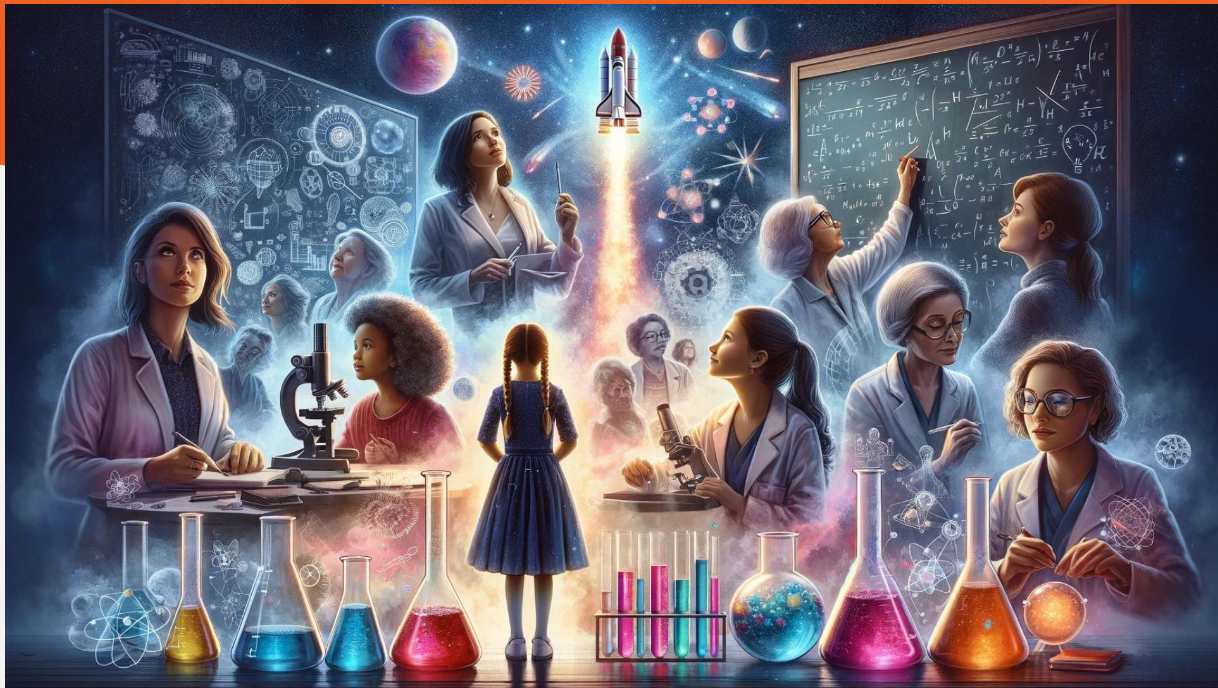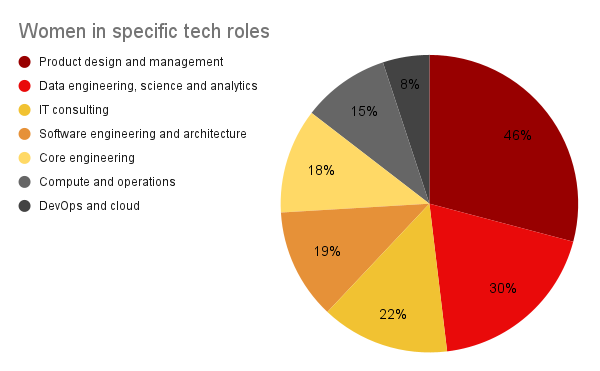We’re never, ever, ever going to be able to fly as high unless we’re both in support of each other.
We need women at all levels, including the top, to change the dynamic, reshape the conversation, to make sure women’s voices are heard and heeded, not overlooked and ignored.
In today’s rapidly evolving world, Science, Technology, Engineering, and Mathematics (STEM) fields play a critical role in shaping our future. However, women’s participation in STEM disciplines continues to be disproportionately low. According to the Global Gender Gap Report (2023), women made up only 29.2 percent of the STEM workforce in the 146 countries analyzed.
In recent years, there has been a growing movement to empower women in STEM fields, aiming to bridge the gender gap and break down barriers that have historically hindered their participation.
This article explores the importance of empowering women in AI, discusses the challenges they face, highlights initiatives that are making a positive impact towards closing the gender gap, and the strategies that can accelerate progress.
UNDERSTANDING THE GENDER GAP IN STEM
According to a report by the National Science Foundation (NSF) in the United States, women make up only 28% of the workforce in science and engineering occupations.
The UNESCO Institute for Statistics reports that less than 30% of the world’s researchers are women.
The World Economic Forum’s Global Gender Gap Report shows that fewer than 30% of employees in scientific research and development are women.
In computer science, women make up just 25% of the workforce, according to the National Center for Women & Information Technology.
THE ROADBLOCKS
Numerous challenges such as social biases and lack of representation hinder the progress of women in STEM.
Also, societal stereotypes and biases perpetuate the perception that STEM is a male-dominated domain and discourage women from pursuing these careers. Lack of representation and role models further exacerbate the problem, as girls and young women often struggle to envision themselves in STEM roles. Additionally, work-life balance, gender bias, and unconscious discrimination create obstacles for women in STEM fields.
NEED OF THE HOUR
Empowering women is crucial for achieving diversity in STEM, innovation, and sustainable development worldwide. By breaking gender barriers, we can tap into a wider talent pool, fostering creativity and fresh perspectives. When women have opportunities to engage in STEM fields, society benefits from their unique contributions and insights.
BREAKING DOWN THE BARRIERS
To empower women in STEM and bridge the gender gap, we need collaborative efforts from various stakeholders which include organizations, educational institutions, and governments.
Some steps that could be taken include:
1. Early Exposure and Education: Encouraging girls to explore STEM from an early age is essential. Schools, communities, and families should provide opportunities for hands-on experiences, mentorship programs, and STEM-focused extracurricular activities such as after-school clubs, mentorship, and outreach activities to expose girls to STEM education and career possibilities. By sparking interest and building confidence, we can cultivate a pipeline of future female STEM leaders.
2. Mentorship and Networking: Establishing mentorship programs and networking opportunities can provide women with guidance, support, and invaluable connections. Mentors can share their experiences, offer career advice, and help navigate the challenges along the way.
Networking platforms can facilitate collaboration, build professional relationships, and amplify women’s voices in the STEM community.
3. Advocacy and Policy Changes: Organizations, industry leaders, and policymakers must champion gender diversity in STEM. This involves implementing inclusive recruitment practices and providing support for women in STEM. Furthermore, representation targets and diversity metrics can hold organizations accountable for progress.
4. Breaking-the-Barriers campaigns: Awareness campaigns and initiatives can challenge stereotypes, dispel gender biases, and foster inclusivity. Sharing success stories of women in STEM can inspire the next generation and counteract negative perceptions. This can help in creating a collective belief in the unlimited potential of women in STEM.
5. Supporting Professional Development: Providing support for women in STEM careers, such as scholarships, grants, and networking opportunities, can help overcome barriers and facilitate career advancement. We have had the likes of UN Women and UNDP partnering with major organizations across the world.
For instance, USAID Power Africa collaborating with Lonadek Inc. to upskill women in the energy sector, GirlsGoIT in Moldova, Mozilla Clubs in Kenya and South Africa, Microsoft in Nigeria and other parts of Africa to eliminate the gender digital gap, and Oracle is empowering girls in Sub-Saharan Africa. However, more still needs to be done in terms of gender-inclusive opportunities and initiatives.
 SUCCESS STORIES
SUCCESS STORIES
The percentage of women may be less in the STEM field but those handful of women have been breaking the glass ceiling. The book titled The Network of African Science Academies (NASAC) highlights the progress made in empowering women in STEM, it is evidential that women have a lot to offer both in the present moment and the future.
However, more needs to be done to sustain this momentum. By fostering a culture of inclusivity, implementing supportive policies, and promoting gender equality, we can continue to close the gender gap in STEM.
Distrelec has provided this graph data depicting the average women’s representation in technology roles across various European countries. The information source for this data is McKinsey.
Conclusion
Closing the gender gap in STEM is a complex and multifaceted issue that requires a collective effort from individuals, organizations, and policymakers. Empowering women in STEM and closing the gender gap is crucial for creating a diverse, inclusive, and innovative future. Let us work together to break down barriers, challenge stereotypes, and inspire the next generation of women to pursue their passions in Science, Technology, Engineering, and Mathematics. Together, we can empower more women and girls in STEM.
Moonpreneur is on a mission to disrupt traditional education and future-proof the next generation with holistic learning solutions. Its Innovator Program is building tomorrow’s workforce by training students in AI/ML, Robotics, Coding, IoT, and Apps, enabling entrepreneurship through experiential learning.



























